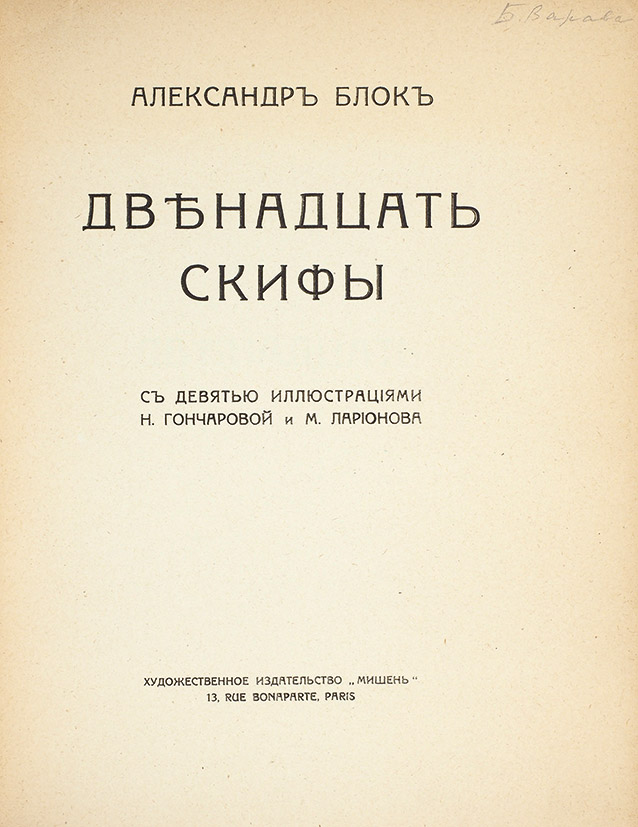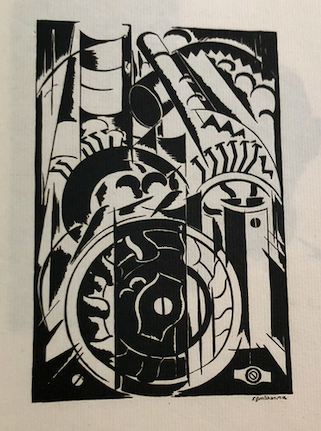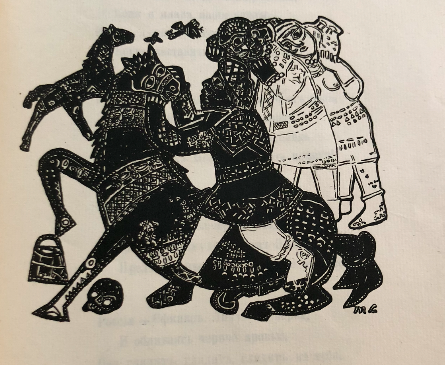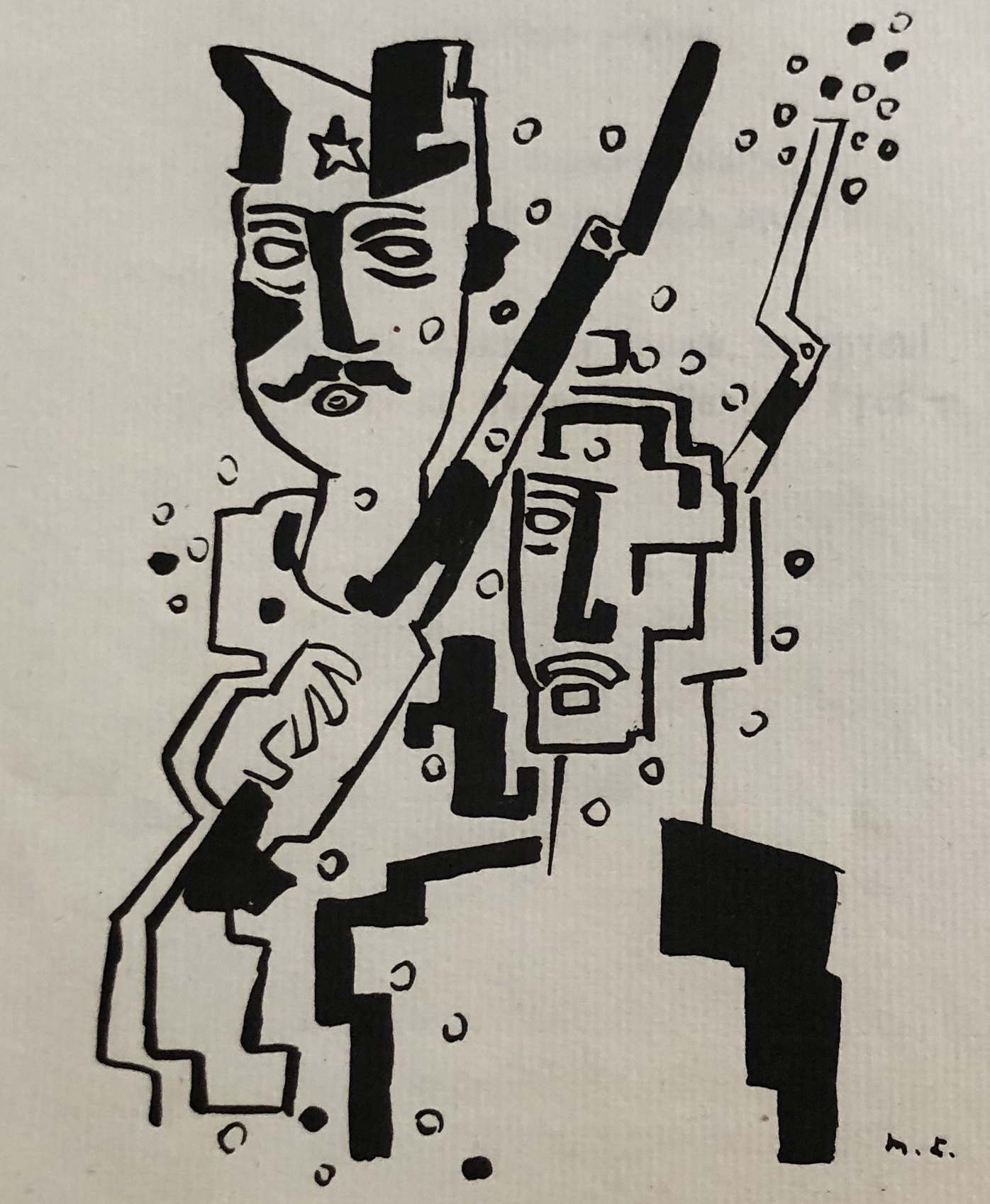BLOK, Aleksandr. Twelve. Scythians. With nine illustrations of N. Goncharova and M. Larionov [Двенадцать. Скифы. С девятью иллюстрациями Н. Гончаровой и М. Ларионова]. — Paris, Arts publisher The Target, 13 Rue Bonaparte, Paris [Париж, Художественное издательство «Мишень»], 20 June 1920. Printed by “Union” print shop 46 Boul. St-Jacques, Paris.
Octavo (241 x 197 mm). [30] pp. Unpaginated, with 9 lithographic plates. The printrun is limited to 250 copies.

Aleksandr Blok (1880-1921) was the major Russian Silver Age poet and the most influential poet of the symbolist movement in the Russian poetry. The Twelve is a short poem in twelve chapters about a unit of twelve Red Guards who patrol the streets of chaotic and tumultuous Petrograd shortly after the October Revolution. The patrol gets into a streat fight killing one of the men’s lover; shortly after they move on, keeping a revolutionary stride. A stray dog follows them, but is chased away with bayonets. Then the soldiers see an indistinct figure ahead – Jesus Christ – who begins to head the march of the twelve.


Regardless of the depicted apocalyptic brutalities and madness of the new street ‘rulers’, the poem remains heavily ambivalent, revealing the positive attitude of the narrator to the Revolution, which is why Blok’s work was largely rejected by the poets of his circle. For the present edition, Larionov created 4 illustrations for The Twelve and 3 illustrations for the Scythians, whereas Goncharova contributed one illustration for each of these two poems.
Goncharova added a culminating image of Christ to the final lines of the poem: “Ahead of them – with bloody banner, / Unseen within the blizzard’s swirl, / Safe from any bullet’s harm, / With gentle step, above the storm, / In the scattered, pearl-like snow, / Crowned with a wreath of roses white, / Ahead of them – goes Jesus Christ.” Deeply engaged in the Christian iconography, Goncharova creates here an unusual portrait of Christ, very different from her earlier religious imagery.

With sharp black and white contrast, she vertically divides his face into black and white halves; his weary eyes with saggy eye circles result in angular tears; everything about his face and background is prickly, as if fully made of thorns. This tired face still contains the imprint of the Christian ideal of wisdom and love but in this depiction, it is shockingly not devoid of the sense of despair, as if Goncharova chose to depict the moment of the flagellation or crucifixion of Christ. Indeed, she creates this imagery during the ravaging Civil War in Russia as a result of the October Revolution that Blok excitingly but still ominously depicted.
- L’art décoratif théâtral moderne
- Samum
- Motdinamo
- Transparent Shadows and Forms
- Twelve. Scythians.
- Gorod (City)
- Conte de Tsar Saltan
- The Russian Ballet in Western Europe 1909-1920
- Tale of Prince Igor
- L’Annonciation: Roman
- Le thé du capitaine Sogoub
- Les Montparnos
- Les Ballets Russes de Serge de Diaghilew
- Skazki (Fairytales)
